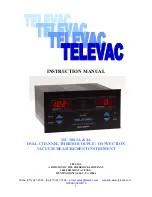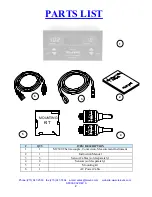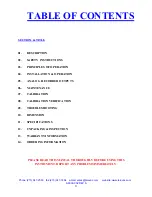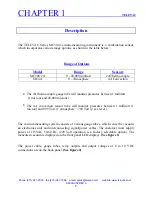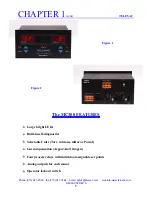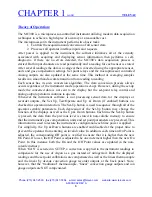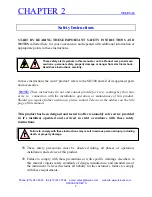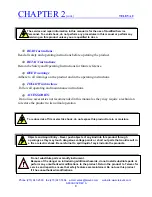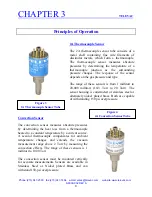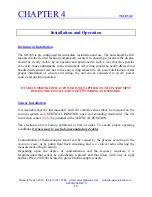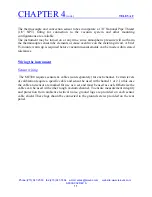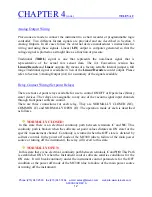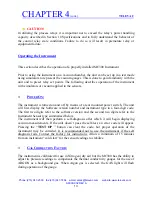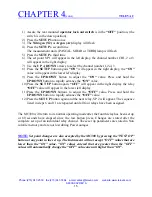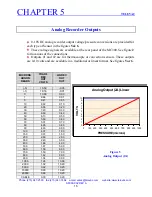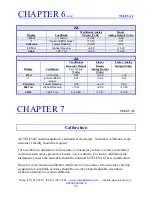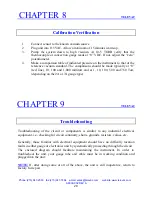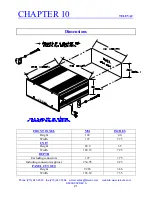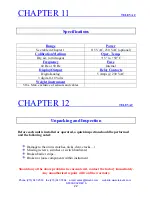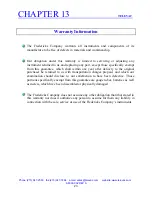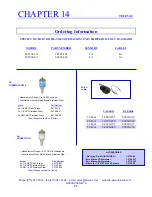
CHAPTER 4
(cont.)
TELEVAC
CAUTION:
In utilizing the process relays it is important not to exceed the relay’s power handling
capacity described in Section 10 Specifications and to fully understand the behavior of
the control relay state conditions. Failure to do so will result in premature relay or
equipment failure.
Operating the Instrument
This section describes the operation of a properly installed MC300 Instrument
Prior to using the instrument on a vacuum chamber, the unit can be set up in a test mode
using simulators to represent the vacuum gauges. This is done to gain familiarity with the
unit and to preset relay set points. The following describes operation of the instrument
with simulators or vacuum applied to the sensors.
P
OWER
O
N
:
The instrument is turned on and off by means of a rear mounted power switch. The unit
will first display the Software version number and instrument type in a four-digit code.
The first two digits refer to the software version and the second two digits refer to the
Instrument Sensor type summarized below.
The instrument will then perform a self-diagnosis after which it will begin displaying
vacuum measurements. If the unit doesn’t pass the self-test, an error code will appear.
Pressing the “
TEST OP
” button can clear the code, but proper operation of the
instrument may be curtailed. It is recommended not to use the instrument if the self
diagnosis fails. Contact the factory for instructions. Allow a minimum of 15 minutes
from an instrument “cold start” for the sensor readings to stabilize.
G
AS
C
ORRECTION
F
ACTOR
:
The instrument is calibrated for use in Nitrogen (dry air) but the MC300 has the ability to
adjust its pressure readings to compensate the thermal conductivity gauges for the use of
ARGON as a background gas. When Argon gas is selected, the GAS light will flash
during operation of the gauge.
Phone:(215) 947-2500 fax:(215) 947-7464 e-mail: sales@televac.com web site:www.televac.com
6-8000-002 REV A
13

